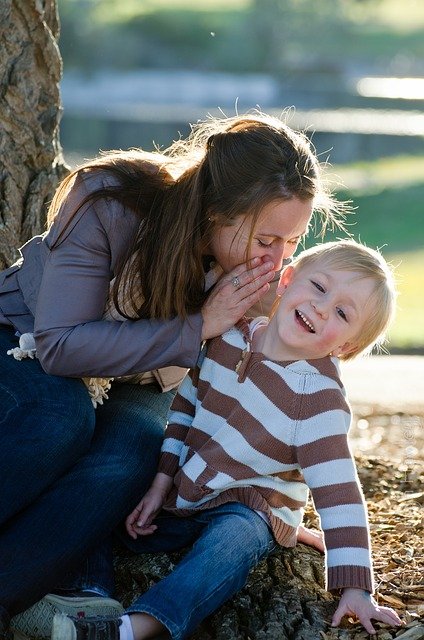Joke: what it is, origin, main features, structure and more
Contents
What is a joke?
The joke, also known in different areas as chascarrillo, is one of the most important oral expressions of literature, transmitted from generation to generation and still alive today. It consists of a type of oral narration, relatively short, which is created with the purpose of arousing laughter, so that it is based on a humorous and funny construction.

It is distinguished from other oral manifestations of literature because it does not have the intention of teaching about any subject, moralizing or warning, but its main objective is to amuse the listener. It is important to bear in mind that although it is initially an oral expression, it is also possible to find it in other formats through writing and graphics nowadays.
Origin of the joke
Although we know that the expressions of oral literature have existed since ancient times, the joke is one of the manifestations that has records dating back to Ancient Greece, since in fact a compilation of jokes called Philogelos, considered the oldest compilation, was made.
Later, compilations of jokes were found in Spain around the XVI and XVII centuries in the court environment, cultivated by poets who made jokes with the purpose of amusing. Later they took the name of salts or facecias in the 18th century when they were written this time in verse and began to appear in book publications and even in other fields such as the press.
In this way, the joke begins to develop an important role in the literary field and in communication, making its appearance as a key element of entertainment and forming part of the production of a great variety of writers, which is why it begins to spread rapidly.
Main characteristics of the joke
This funny saying has been one of the most cultivated elements throughout the history of mankind and continues its validity with the passing of generations. That is why we will see below a series of important features that allow us to distinguish it from other manifestations:
Intention of the joke
In general, as we have mentioned, the main objective of the joke is comedy. In this sense, the whole construction of the joke aims at making the listener laugh, according to the context, region, language, etc. A joke can be considered good or bad to the extent that it achieves its purpose, however, this may vary depending on the context or interpretation.
Health benefits
Another important element that we cannot leave aside about the joke has to do with the health benefits it implies. The act of laughing is able to promote the secretion of adrenaline to enhance processes such as creativity and imagination, helps to combat depression, worry and anguish, allows the segregation of endorphins beneficial to the brain, involves the musculature of different parts, among others.
Presence of stereotypes
One of the most distinctive features of jokes, particularly in recent times, has been the presence of common stereotypes in them. This aspect applies a set of ideas that are attributed to different groups of people, thus appealing to a stereotyped identity that is usually observed in biased jokes or aggressive jokes, which we will see below.
However, it should be kept in mind that not all stereotypes found in jokes are negative, as there are some that highlight values and virtues. In general, we can find stereotypes of gender, ethnicity, regions or nations, professions, behaviors, among many others.
Use of resources
Jokes can be composed by a great variety of resources, among them we can find extended speeches or very short compositions. It is also possible to find elements such as parody, irony, mockery, wordplay, associations, comparisons, among many others.
Structure of the joke
The joke has changed its format, content and linearity with the passage of time, as the creators of this type of expressions also try to leave their own style in it. However, it is possible to identify two important elements that define its outline, thus, we find the following:
Introduction
It is the initial part of the joke. The one who narrates the joke can begin to approach it in different ways that allow him to start with a short contextualization of the situation on which the story is based. In this way, he starts with the narration.
Content
In this part we find all the content and information of the situation. After a very short contextualization of the situation, the narrator proceeds to tell the joke through a joke that, connected with the introduction, generates a funny situation that provokes the laughter of the listener.

Types of jokes
According to the subject matter of a joke, it is possible to identify several modalities or categories in which we can classify them. Thus, we can find the following types of jokes:
Innocent joke
It is characterized for being a composition that finds an end within itself and is usually structured by a play on words, so that the listener only has to make a process of abstraction of the information offered. They are often known as white jokes and lack any kind of verbal offense to the audience or in their content.
Biased joke
It is seen as a type of hostile joke that is mainly characterized by having an erotic, obscene and in some cases even aggressive content. Thus, we can find tendentious jokes of varying degrees of vulgarity that may contain sexual themes. They are also known as dirty jokes or red jokes.
Many of these jokes may mock, among other things, physical or mental disabilities or limitations, diseases, considerable ailments and may even make fun of death, which is why one of its degrees is called black humor or black joke.
Double entendre jokes
Very close to tendentious jokes, they are creations generally based on stories that have no apparent meaning or anecdotes, which are disguised through ambivalent words. They are often jokes that appeal to sexual or erotic elements, although it is not a total condition.
Political joke
This type of joke gathers all those that narrate aspects that are related to the area of politics, either with national politics directly, or with elements of international politics. In this sense, they can appeal to specific situations or to personalities that have been recognized in different periods of time within the political framework.
Stereotype jokes
As we mentioned, one of the most frequent features in the creation of jokes nowadays is the incorporation of stereotypes, mainly based on gender, race, occupation, area of origin, etc. In this sense, it is possible to develop jokes about stereotypes according to the cultures and the vision of each one of them.
Tips for writing a joke
Now, how to write a joke? Surely at this point it is possible to ask, according to its components, how to create it. Well, here are three key elements to consider in this process:
Identify the audience’s interest
According to the audience to whom the joke is addressed, it is necessary to initially consult their interest and not focus on what would make us laugh. That is why a key recommendation is to appeal to interesting topics for the audience that they are aware of and that will generate the success of the joke.
Try reviewing the themes identified with other comedians and the ways in which they develop the joke, there it is possible to find reference materials that allow us to continue with the creation.
Structuring the joke
As we have seen, the format of the joke can take several forms, since the style component of the person who creates it will always be integrated. In this sense, defining how it will go allows us to identify where the punch line or the climax of the story will be. It is possible to implement it as a story, to make a very brief joke, to expand it from an anecdote, etc.
Surprise factor
This factor is perhaps the main element of the joke, since in order to achieve comedy and surprise, the content must not be obvious or predictable, precisely to generate the reaction that is sought. In this sense, the surprise factor can resort to two key resources: on the one hand, the exaggeration of the situation or the element that is being talked about, and on the other hand, the irony of the fact. It is possible to add reinforcements such as tone of voice, imitation, among others that are essential to surprise the audience.
If you want to know more about other types of oral literary expressions, we have a section dedicated to it in types of literature. Remember that if you are interested in learning more about the literary world, we have a complete section dedicated to this artistic field where we tell you all about it.
